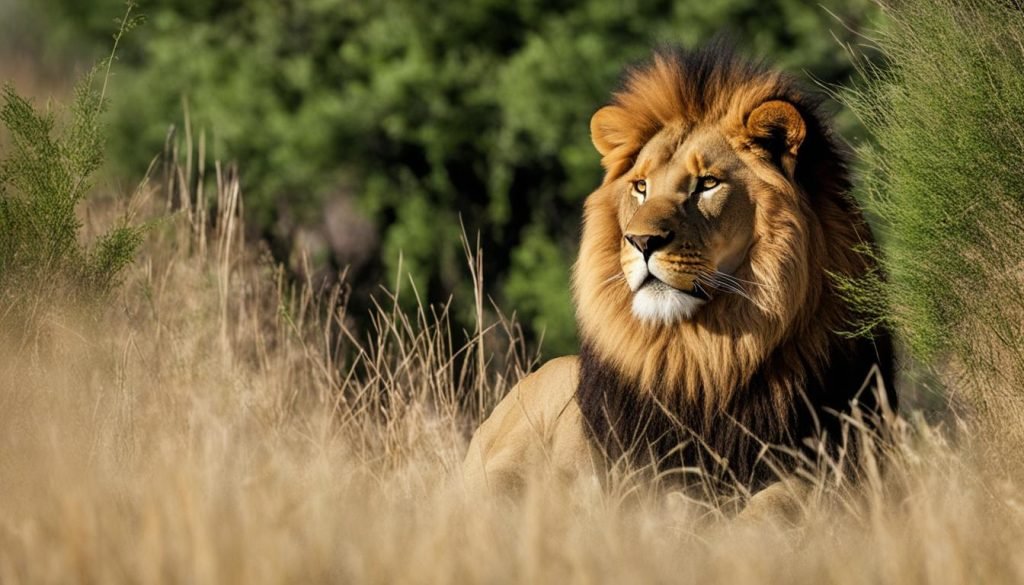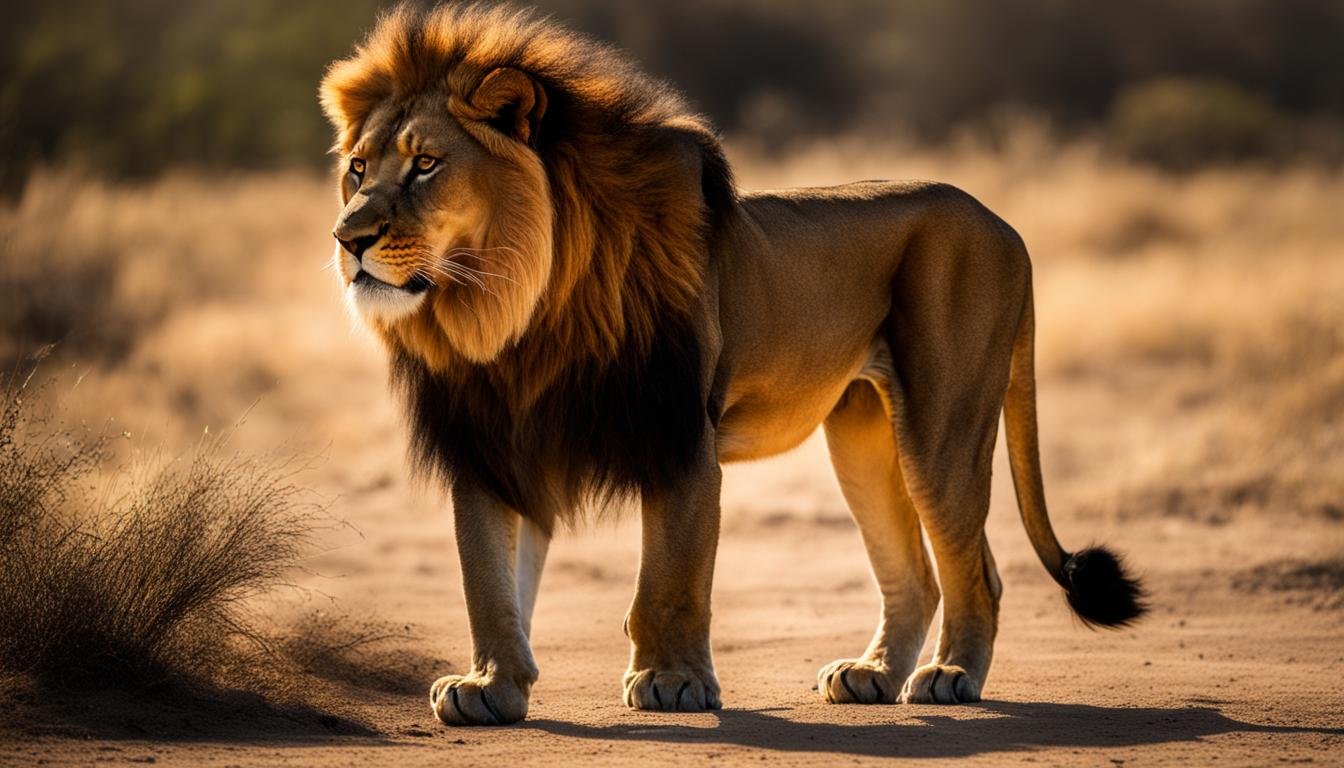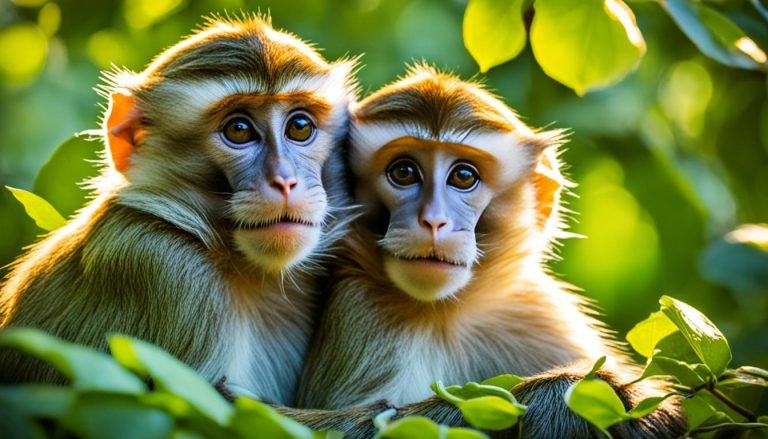Lion Defense Tactics: How Do Lions Protect Themselves?
Lions are majestic creatures that roam the wilds of Africa and have long captured the human imagination, starring in films and documentaries, and gracing the pages of magazines.
Aside from their beauty, lions are also known for their strength, courage, and exceptional defense mechanisms, which make them one of the top predators in the savannah.
In this article, we will explore the unique self-defense mechanisms of lions, including their innate survival instincts, natural defense strategies, and physical attributes that help them protect themselves from potential threats.
We will analyze how these tactics have evolved through generations to ensure the pride’s survival and examine situations where these strategies come into play.
Key takeaways:
- Lions have evolved a diverse range of defense strategies in response to varied threats in the wild.
- Understanding lion instincts and behaviors is crucial in evaluating their protective mechanisms.
- Lions employ a range of tactics, including camouflage, strength in numbers, and hunting skills to protect themselves.
- Human activities pose a threat to lions, and conservation efforts are necessary for their survival.
Lion Instincts and Behaviors: How Do Lions Protect Themselves?

When it comes to self-defense, lions have developed unique protective behaviors and survival tactics.
Lions’ instincts fuel many of their defense strategies. For instance, their acute sense of hearing allows them to detect the slightest sounds, alerting them to potential threats. Similarly, their keen sense of smell enables them to detect predators or prey from afar.
Lions’ inherent behaviors also play a crucial role in their survival. For example, when threatened, lions stand their ground and fight back. They use their powerful jaws and sharp claws to ward off predators. Alternatively, when they feel outnumbered or overpowered, lions will retreat to safety.
Another lion protective behavior is their tendency to hunt in groups. In prides, multiple lions work together to take down prey and defend their territory against common threats.
Overall, lions’ defense strategies are grounded in their innate instincts and behaviors, which help ensure their safety in the wild.
Lion Survival Tactics
Besides their protective behaviors, lions also use several survival tactics to stay alive. For instance, when food is scarce, lions can go without eating for up to fourteen days.
In addition to this, lions have a unique ability to conserve energy by sleeping during the day and hunting at night. They also use their natural surroundings to survive, typically hiding in dense bushes or tall grass to remain undetected.
Furthermore, lions’ social structure allows them to raise their young under the protection of the pride, ensuring their survival. When a lion becomes injured or unable to keep up with the pride, other members will take care of them by bringing them food.
Lion Defense Strategies
Aside from their protective behaviors and survival tactics, lions also have various defense strategies. One of their most potent defense mechanisms is their ability to roar. Lions roar to communicate with each other, establish dominance, and deter potential predators.
In addition to their roars, lions also use their mane as a defensive mechanism. Male lions’ manes not only make them look more imposing but also protect their necks from other lions’ bites during confrontations.
All in all, lions’ defense strategies are an intricate web of innate instincts, behaviors, and tactics that come together to ensure their survival in the wild.
Camouflage: Blending into the Surroundings

When it comes to natural defense strategies, lions have evolved to blend into their surroundings. This helps them stay hidden from potential predators, making it easier to avoid confrontations that could put them in danger. The coloration and patterns of a lion’s coat serve as an effective camouflage in their natural habitats, such as the savannas of Africa.
The fur of a lion is typically sandy or gold in color, which helps them blend into the grassy plains where they spend most of their time. The darker hair found on their tail tip and mane serves as a visual distraction, drawing the eye away from more vital areas. The spots and stripes on a lion’s coat also help to break up their outline, allowing them to hide in plain sight.
To guarantee success, lions also use predator evasion tactics. They move stealthily through grassy areas and hunt with the element of surprise, often taking down prey by attacking from behind. A lion’s sneak attack allows them to catch their prey off-guard while remaining hidden from potential predators.
In conclusion, a lion’s natural defense strategies include the use of camouflage and predator evasion tactics to protect themselves from potential threats. Their ability to blend into their surroundings and move quietly through their environment ensures their survival in the wild.
Strength in Numbers: The Power of the Pride

Lions are social animals, with adaptable behavior, and cooperative living to ensure safety from potential threats. The lion pride consists of related females and their offspring, with a few males. One of the most effective defense mechanisms of lions is their ability to live and hunt in prides. The power of numbers helps lions ward off predators, protect their young, and defend their territory.
The lion pride is versatile and can adjust its size depending on the available resources and food. This flexibility ensures that individuals within the pride have a higher chance of survival and better access to resources. Furthermore, being part of a pride provides added safety for the cubs and the females. The presence of multiple lions enhances their ability to successfully hunt prey and defend themselves.
| Lion Defenses | Description |
|---|---|
| Cooperative Hunting | The pride’s cooperation and coordination during the hunt have a better chance of killing prey, which defends their food source and reduces the threat of competition from other animals. |
| Multiple Threat Detection | With more eyes and ears in the pride, threats are detected more quickly and dealt with efficiently. The ability of the pride to sense danger helps with their self-preservation, as they can avoid potential threats. |
| Intimidation | Lions can intimidate predators or rivals by their sheer size and number, which is helpful in warding off threats. |
| Climbing Trees | Lions appear cumbersome, but they have a surprise for potential predators. Contrary to what most people may assume, lions can climb trees and do so for safety when a threat approaches. |
The pride’s protection of its young is crucial to the survival of the species. Female lions look out for each other’s cubs, ensuring the safety of the next generation of lions. Furthermore, males within the pride defend their territory against rival males, protecting their food source and ensuring their safety.
The lion pride’s defensive mechanisms emphasize the importance of the social structure of lions and how it secures their survival in the wild.
Mane as a Defense Mechanism

Besides making male lions look impressive, their manes serve as a defensive mechanism against rivals and predators.
The thick, flowing mane is unique to male lions, and it is essential for their survival. During confrontations with other lions, the male lion’s mane makes him look larger, intimidating his opponent and making it appear as if he is ready to pounce. In many cases, the mane alone is enough to deter would-be attackers.
Additionally, the mane protects vital areas of a lion’s body during fights. The thick hair around the neck provides a shield for the lion’s throat, preventing potential life-threatening injuries.
The mane, combined with other defensive strategies, allows lions to protect themselves against threats.
Roaring: Communication and Deterrence
Lions are well-known for their intimidating roar, which serves both as a communication tool and a method of deterrence. Lion roars can be heard up to five miles away and can create fear in the hearts of other animals, no matter their size.
Roaring is a vital component of a lion’s self-defense mechanism. By making such a loud noise, lions can establish their territory and communicate with other pride members. However, roaring can also deter threats. When faced with a predator or rival, lions will often let out a deafening roar. This display of aggression and dominance is often enough to ward off would-be attackers and establish the lion’s dominance.
In addition to being an essential self-defense mechanism, lion roars are a tool used to communicate with pride members over long distances. Lions frequently roar to communicate with each other and maintain social bonds within the pride. These loud vocalizations can help distressed members find their way back to the pride if they become lost or separated.
Lion Roaring Statistics:
| Lion Roaring Information | Data |
|---|---|
| Distance a lion’s roar can be heard | 114 decibels |
| Distance a lion roar can be heard | Up to 5 miles |
| Time of day lions are most likely to roar | Nighttime and early morning |
As apex predators, lions have evolved unique defense mechanisms that allow them to survive in the wild. From their innate instincts to physical characteristics, lions have developed natural defense strategies that help them protect themselves and their pride members. Next, we’ll take a closer look at how these strategies help lions thrive in their unique habitats.
Adaptability: Surviving in Different Environments
Lions are highly adaptable creatures that have managed to survive in vastly different environments throughout the ages. From grasslands and savannas to forests and mountains, these majestic animals have adapted their natural defense strategies to navigate various ecosystems, each with its own set of unique challenges.
For example, in the vast open plains of Africa, lions rely on their camouflage abilities, using tall grasses as cover, to hunt and stay hidden from potential threats. In contrast, in the dense forests of Gir National Park in India, lions have adapted by developing broader paws that allow them to climb trees, which provides them with an advantage when hunting deer.
These adaptations enabled lions to survive and thrive in different environments, highlighting the intelligence of these animals and their ability to evolve in response to various challenges. By adapting to environmental changes, lions protect and preserve their natural habitat, ensuring their survival.
How Humans Affect Lion Adaptability
Humans have had a significant impact on lions adaptability and their ability to survive in the wild. The encroachment of human settlements, hunting, and poaching has directly threatened lion habitats and populations. Human activities such as industrialization, increased agriculture, and land development have resulted in habitat loss and fragmentation, limiting lion adaptability.
However, various conservation efforts are underway to protect and preserve lion habitats and populations. The World Wildlife Fund and other organizations are working towards creating protected areas and reducing human-wildlife conflict, allowing lions to continue adapting and surviving in diverse environments.
Hunting Skills: The Best Defense
When it comes to defense strategies, the hunting skills of lions stand out as their most effective tool. Lions are apex predators that employ various hunting tactics to catch their prey.
A lion’s hunting skills are honed through years of practice, and they utilize their power, agility, speed, and intelligence to overcome their prey. One such tactic is stalking, where they keep a low profile and move slowly and silently towards their prey to ensure the element of surprise.
Another effective hunting strategy is teamwork. Lions hunt in prides, with each lion having a specific role to play. The females of the pride are often responsible for initiating the hunt, while the males provide backup. By working together, they can take down larger prey and share in the spoils.
In addition to aiding in their food acquisition, these hunting skills also assist in their defense against potential threats. A lion’s strong jaw and sharp teeth can inflict severe damage, while their speed enables them to outrun potential predators.
However, hunting can also be dangerous, especially when it comes to large prey such as buffalo and wildebeest. A wounded animal can inflict fatal injuries, and sometimes lions have to flee from an injured prey animal.
Overall, it is their hunting skills that have made lions one of the most successful predators in the wild. Their ability to hunt and kill prey efficiently helps ensure their survival and protect themselves against potential threats.
Coexistence with Humans: Challenges and Conservation Efforts
As much as lions are an essential part of our ecological balance, human activities present significant threats to their existence. Encroachment on lion habitats, poaching, and human-wildlife conflicts continue to pose serious challenges to lion conservation efforts. Protecting lions in the wild requires collaborative efforts between local communities, governments, and wildlife conservation organizations.
Conservation initiatives such as creating protected areas, promoting responsible tourism, and wildlife education, are crucial in preserving lion populations. Additionally, measures such as building barriers to keep lions away from human settlements, and providing compensation for any damages caused by lions can help mitigate human-lion conflicts. It is also vital to involve the local communities in conservation efforts, by providing incentives such as employment opportunities and sharing revenue from tourism to create a sense of ownership and responsibility towards protecting lions in the wild.
The survival of lions in the wild is crucial for our ecosystem’s well-being, and protecting them should be a top priority. By raising awareness and implementing effective conservation strategies, we can ensure that these magnificent creatures continue to thrive for generations to come.
Learn More About Lions:
- How Long Do Lions Live? Wild vs Captivity
- Where Do Lions Sleep?
- How Fast Can Lions Run?
- Can Lions Swim? Lion’s Swimming Ability Examined
- How Do Lions Mate? – Lion Reproduction
- Cannibalism in Lions: Do Lions Eat Other Lions?
- How Long Are Lions Pregnant? Gestation Period
- Do Lions Hibernate During Winter?
- How Big Can Lions Get? Lion Size Chart
- How Much Do Lions Weigh? Lion’s Weight Revealed







